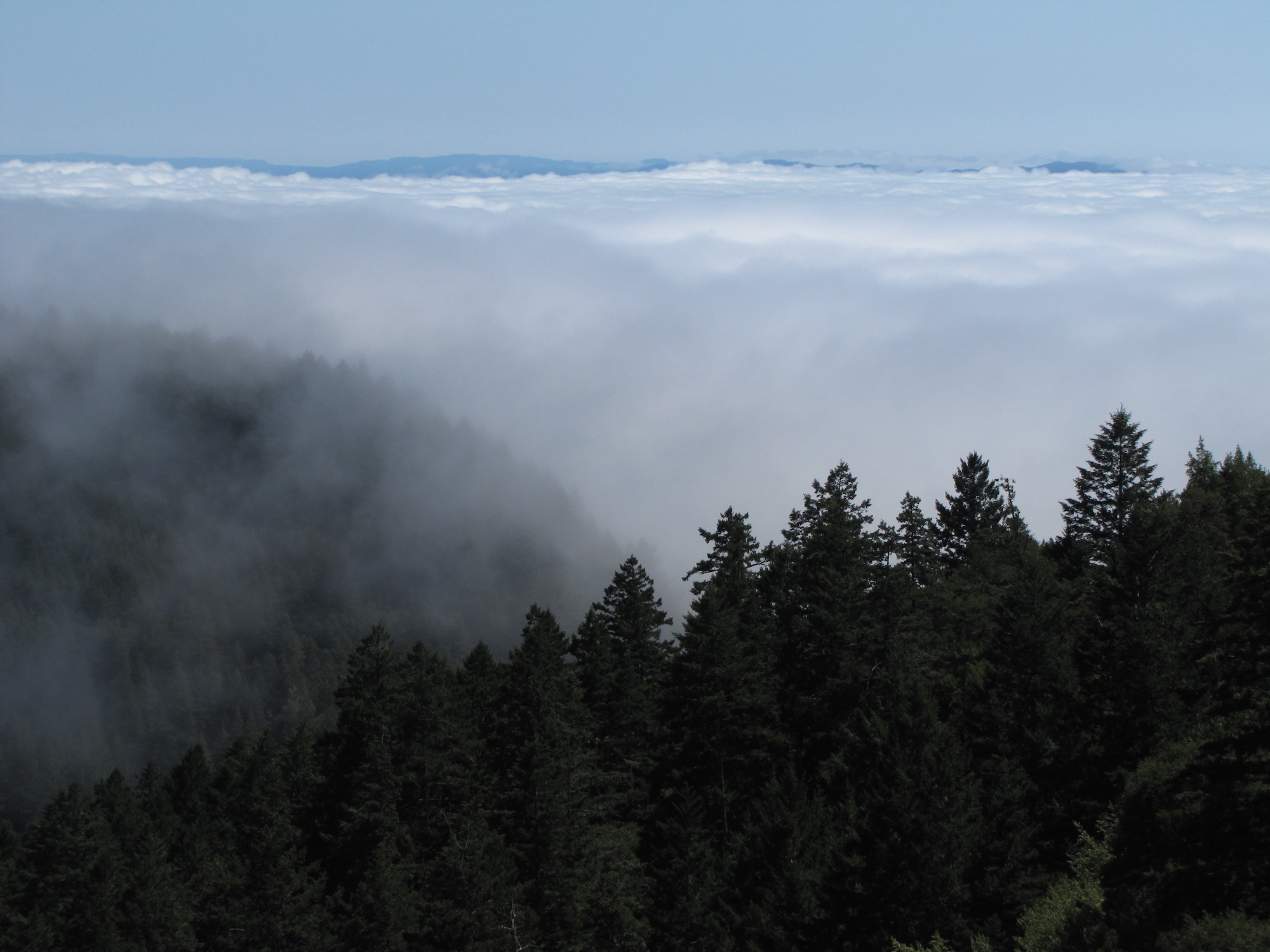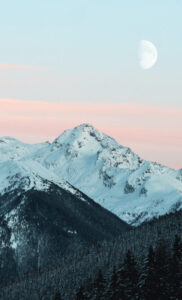For a more accurate forecast, Null advises observing the weather a day in advance of setting out to catch an inversion. One of the tips Null shared: “If it’s going to be getting warmer, then that probably indicates that the marine layers are going to be more shallow,” making it a great chance to see the clouds beneath you at certain altitudes.
In contrast, if it’s going to be cooler, the marine layer will be deeper and higher up on those mountains — meaning it’ll be above most parts of the entire Bay Area, Null added. In other words, your chances of hiking above the clouds are greatly reduced.
Here are some tips shared by Null and others in the Bay Area who know how to successfully chase the marine layer inversion:
Observe marine layer inversions using weather apps like National Weather Service, Accuweather, Windy or others
Start by checking the “cloud tops” or cloud ceiling — the height at which clouds form. If they’re around 1,000 to 2,000 feet, and your summit hike is above that elevation, good news: you’re likely to be above the cloud layer.
Use tools like the National Weather Service’s Aviation Forecasts or AccuWeather, which list ceiling heights at different locations. Mount Tam, for example, stands at about 2,200 feet, while Twin Peaks is just under 1,000 feet.
Null also recommends websites like Everything Weather, built by a former National Weather Service forecaster, that offer localized human-curated forecasts that are more reliable than many generic weather apps, he said.
 Fog encroaching on the Bay Area, as seen from Mount Tamalpais in Marin County. (Craig Miller/KQED)
Fog encroaching on the Bay Area, as seen from Mount Tamalpais in Marin County. (Craig Miller/KQED)
Check live webcams or satellite images
Mount Tamalpais, Sutro Tower, the Golden Gate Bridge and other notable spots may have live webcams available that you can check for fog and cloud activity early in the morning.
Null suggests watching satellite imagery, wind direction and local weather discussions to keep an eye on local landmarks, which can act as visual indicators of the marine layer’s height. “You can kind of gauge ‘is it above or below the towers of the Golden Gate Bridge?’ ‘Is it over Twin Peaks?’ ‘Is it up to Sutro Tower?’”
Google Earth can also be a great tool to observe visible fog or low-lying clouds.
Arrive early
Plan to be at your chosen spot around sunrise (5:30 a.m.–7 a.m. in the summer) for the most dramatic views before the clouds start to burn off.
Do you always need to go high?
Not always. If the cloud layer is shallow — say, 400–800 feet — even the modest hills within San Francisco can offer views above the mist. Spots like Twin Peaks, Tank Hill and Bernal Heights sometimes poke just above the marine layer, offering in-city access to the phenomenon without needing to climb a mountain.
Great Bay Area hikes for walking above the clouds
Before you head out, remember that clouds can shift quickly — so stay flexible (and realistic that today might not be the day.)
Dress in layers, as temperatures can swing dramatically between the coast and the hilltops. Bring water, check trail conditions and always leave no trace.
Here are some Bay Area spots that offer stunning views above the marine layer — if time, the elements and luck are on your side.
Mount Tamalpais, Marin
Elevation: ~2,500 feet
Mount Tam is the classic spot for fog lovers. Head to the East Peak early in the morning during summer, and you might find yourself above a sea of clouds spilling in from the Pacific. Trojan Point, situated at an elevation of 1,874 feet, is another popular spot on Mount Tamalpais to experience a marine layer inversion.
@modicumofjoy run, do not walk.. This hike will take you above the clouds, and if you time it right- you might see the Golden Gate Bridge peeking through 𝙎𝙘𝙧𝙤𝙡𝙡 𝙩𝙤 𝙨𝙚𝙚 𝙝𝙤𝙬 𝙩𝙤 𝙬𝙞𝙩𝙣𝙚𝙨𝙨 𝙩𝙝𝙞𝙨, 𝙬𝙝𝙚𝙧𝙚 𝙖𝙣𝙙 𝙬𝙝𝙚𝙣, 𝙬𝙞𝙩𝙝 𝙥𝙖𝙧𝙠𝙞𝙣𝙜 𝙞𝙣𝙛𝙤! there is one place where you will ALWAYS see this (only during the summer months) and that is.. Mount Tamalpais, California It’s only 30 mins from north San Francisco and you can witness this phenomenon from these points.. 𝙑𝙄𝙀𝙒𝙋𝙊𝙄𝙉𝙏𝙎 ️ Trojan Point- Google Maps will get you there, park and walk up (first clip) for about 5-7 mins ️ Once you park at Trojan Point Parking Lot, there are two trails on the right of the lot, those will take you to the views in the second and third clips! 𝙃𝙊𝙒 𝙏𝙊 𝙈𝘼𝙆𝙀 𝙎𝙐𝙍𝙀 𝙄 𝙎𝙀𝙀 𝙏𝙃𝙄𝙎? This is not so simple, but let me explain my process: ⏰ this only happens during June, July and August ️ you need to make sure the clouds are lower that Mt Tam’s (Mt Tam is 2500m tall) ️ to do this, people suggest the Windy app, but you need to pay to get the cloud height details so I suggest AccuWeather ️ Find the Cloud Ceiling height and make sure that during sunset (around 8pm) that the clouds are lower than the height of Mt. Tam.. and that’s it 𝙃𝙊𝙒 𝘼𝙍𝙀 𝙏𝙃𝙀 𝘾𝙇𝙊𝙐𝘿𝙎 𝙎𝙊 𝙇𝙊𝙒? this phenomenon is called a cloud inversion, and it usually happens where the temperature increases with altitude, rather than the usual decrease! This causes a layer of warmer air to sit above cooler air, trapping clouds and fog below the inversion layer 🤯 Would you visit here? ️ Follow @modicumofjoy for more travel inspiration across the California and beyond #california #sanfrancisco #californiaadventure original sound – modicumofjoy

















